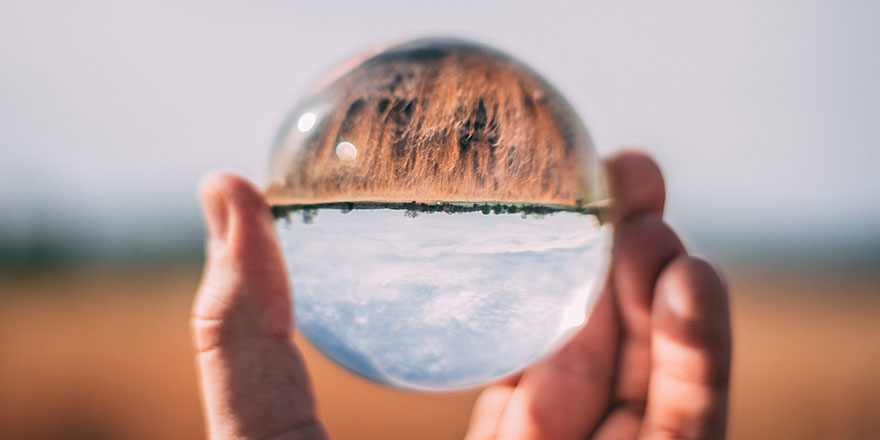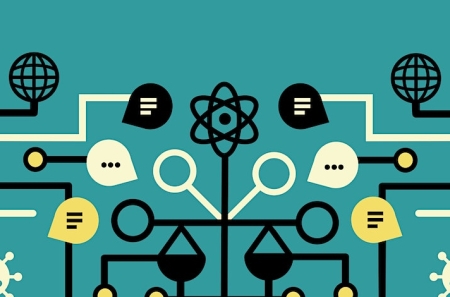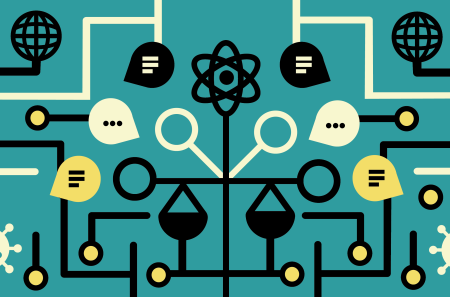
Creating sustainable futures through a Circular Economy
02 October 2020Circular pathways - our future for regenerative and sustainable living.
Burdens of Consumption
2020 marks the 50th anniversary of the first widely shared Earth Day celebration around the world but our growth in population and modern lifestyles does not reflect a celebration for the planet’s health. Humankind is placing ever increasing burdens on our Earth’s ecosystems and finite resources [1] . We are testing the limits of the planet’s systems to provide resources for basic human needs and for economic development. We also expect the ecosystems to adsorb the negative inputs (pollution) of our human behaviour throughout our lithosphere (land), pedosphere (soils), hydrosphere (water), biosphere (organisms), and atmosphere (air).
Humans began reshaping our environment almost as soon as our ancestors began migrating out of Africa well over a million years ago. Global archaeological data show that human transformation of environments began at different times in different regions and accelerated with the emergence of agriculture. By 3,000 years ago, much of the planet was already transformed by hunter-gatherers, farmers, and pastoralists [2]. Two hundred years ago, there were fewer than one billion people on Earth. Today, there are 7.8 billion people. According to the United Nations, there is likely to be 30% more of us by 2050, and 11 billion people by 2100. We are in what many scientists now call the Anthropocene Epoch, a proposed geological epoch dating from the commencement of significant human impact on Earth's geology and ecosystems. It includes, but is not limited to, anthropogenic climate change.
If we want to cohabit sustainably on our Earth for many generations ahead, we need to ask ourselves deep questions regarding how this can be achieved. Do we have any obligation to Earth’s future human generations and biodiverse habitats? Are we prepared to deal with the ever-increasing challenges of assessing and managing complex global risks [3] ?
COVID-19 – An Opportunity?
Globally, our shared COVID-19 pandemic experience has sharpened our perspectives for our common interconnected futures. It has exposed the fragilities of our present globalised societal norms and focused public attention on the interconnectivities of people and places across the globe. It has also sensitised us to understanding critical interdependencies in our global supply chains.
This pandemic episode will likely be a lost opportunity if we do not reset our present societal principles. Bold and far-reaching creative designs for our refreshed values are being actively progressed during this hypersensitised time and the Circular Economy model is gaining traction as a replacement to the prevailing Linear Economy model [4] . The skillsets of scientists, engineers, planners, medics, cultural caretakers, artists, educators, religious bodies, financiers, and stewards of the natural environment can all be applied to help the circular economy take hold. Circular thinking can help safeguard intergenerational equity for our shared planet. In my own field of environmental sustainability for industry sectors, a simple but captivating example of circular principles is in turning a waste stream into a valued resource. An example is in bread or dough which would be otherwise considered waste is collected from a bread manufacturing process (bakery), where it becomes a valued substitute resource (bread grain replacing beer malt) for a beer manufacturing process (brewery); while the spent grain (used in brewing) returns to the bakery as a valuable nutritious ingredient for baking another type of bread. Such innovative, creative thinking and collaboration among organisations helps us to consider valuable possibilities for building our better sustainable future.
Thinking in ‘Systems’
The megatrends of a rapidly changing world require that we view growth through a sustainability lens. The ability to understand how parts influence one another within a whole, and the relationship of the whole to the parts, is crucial. This is systems thinking and describes evolving conditions and cause and effect situations within earth and environmental sciences. It considers that our systems should work like organisms, processing nutrients that can be fed back into the cycle. Whether biological or technical, ‘closed loop’ or ‘regenerative’ terms are associated with a circular economy model. The model also describes real-world systems which are non-linear, feedback-rich, and interdependent. As envisioned by the originators, a circular economy is a continuous positive development cycle that preserves and enhances natural capital, optimises resource yields, and minimises system risks by managing finite stocks and renewable flows [5] . This is regenerative sustainability at its best.
Transitioning to a Sustainable Circular Economy
For society to transition to a circular economy we need to embrace all the concepts of the circular economy rather than just bending the workings of a linear economy (the take-make-waste model [6] ). For example, in the industrial model a circular economy designs out waste as far as feasible and designs in modularity and adaptability. The biological and technical components of a product are designed by intention to fit within a biological or technical materials cycle, or loop, to feed back into the system for sustained reuse.
An integrated farming example
Energy from the sun, and water from rainfall naturally powers agricultural production in Ireland. Fossil fuels are used in fertilisers, farm machinery and throughout the supply chain. In a circular economy a more integrated food and farming system would reduce the need for fossil-fuel based inputs. Value creation around biological materials lies in the opportunity to extract additional value by cascading materials safely as substitute inputs through other farming needs. And in an effort to fuel more sustainable production, the lost value of neighbouring farm’s biological by-products and manures would be captured and shared through applying industrial symbiotic practices (exchange of energy and materials among processes in an effort to create value and reduce environmental impact). Additionally, more sustainable, decarbonised and non-air polluting supplies of energy would be introduced to run the farms through switching to renewable forms of energy such as wind, solar and wave.
A COVID-19 industrial example
We are learning from our COVID-19 experience that well governed decentralised and diverse production systems having more localised supply chains and giving more control to local stakeholders, are proving to be more resilient to external shocks than production systems built simply for centralised efficiency around economies of scale. Decentralised systems are proving to be more agile and adaptable to shock events. A recent example of a production system that could not adapt quickly enough to increased demand was in the global supply of assisted breathing ventilators [7]. A global shortage of ventilators for Intensive Care Units prompted innovators worldwide (engineers, doctors, and researchers) to develop and manufacture emergency ventilators in many countries. A worldwide community of professionals is helping to redesign ventilator components where circularity principles of modularity, versatility and adaptivity of the produced items have become prioritised features for a world in crisis.
Rethinking sustainable progress through a Circular Economy
Companies from all sectors are having to confront and adapt to the range of disruptive systemic forces already mentioned. These disruptions are challenging the business models of many sectors while forcing all companies to be more accountable to, and transparent with, their stakeholders.
The world’s future economic development is expected to depend on low carbon technologies to help decarbonise our economies through electrification, digitalisation, and automation. However, these advanced technologies have made us dependent on relatively small quantities of specific elements and materials. Governments have used the term critical materials for defence purposes and economic purposes. But in the context of the circular economy the focus is on the rarer elements which are critical for many of the new advanced technological developments in low carbon energy and electrical storage or communication technologies [8]. The EU Commission has identified several lists of materials based primarily on the threats to the security of their supply and their economic significance.
A fundamental point is that while technology and innovation speed up, the supply of critical materials plays a potentially limiting role for all technology development. Causes of these limitations may be if the minerals/materials cannot be sourced due to resource scarcity, the uneconomical viability of mineral ores, or unacceptable sourcing methods (human rights). As an example, the German technology giant Siemens uses over 10,000 materials in the manufacture of its products and provision of services. Decisions regarding which materials to employ in technological design and the developments of products have far reaching implications, from potential threats to availability, to environmental footprints, and to the consequences of their long-term use. Circular thinking and sustainability principles are therefore embedded in the ‘Product Eco Excellence’ programme which aims to reduce or completely replace eight critical materials. This effort aims to reduce associated risks in the production of its technology [9].
The potential for successive waves of this COVID-19 pandemic to recur brings a climate of economic uncertainty for all societies. A circular economy challenges us to consider how with creativity and innovation we can build restorative economies. Rethinking progress explores how, through a change in perspective, we can redesign the way our economy works; by designing products that can be 'made to be made again,' and by powering the energy systems of production with renewable and sustainable forms of energy.
- https://futureearth.org/initiatives
- https://www.sciencealert.com/archaeologists-are-arguing-about-exactly-when-we-started-the-anthropocene
- https://www.weforum.org/reports/the-global-risks-report-2020
- https://www.ellenmacarthurfoundation.org/explore/the-circular-economy-in-detail
- https://www.ellenmacarthurfoundation.org/circular-economy/what-is-the-circular-economy
- https://www.researchgate.net/figure/The-linear-economy-The-take-make-and-waste-approach-of-production_fig2_323809440
- https://www.economist.com/international/2020/03/26/scientists-and-industry-are-dashing-to-make-more-ventilators
- https://easac.eu/publications/details/circular-economy-indicators-and-priorities-for-critical-materials/
- https://new.siemens.com/global/en/company/sustainability/productstewardship/critical-materials.html
Geraldine Ann Cusack
Sustainable Manufacturing, Irish Manufacturing Research (IMR)
Current Opinion Series (number 8) of the RIA Climate Change and Environmental Science Committee
Interview with Geraldine A. Cusack
When did you join the RIA Climate Change and Environmental Science Committee?
I was delighted to join the Climate Change and Environmental Science multidisciplinary committee for the 4-year term 2014-2018, and subsequently was invited to continue for this present term 2018-2022.
What is your area of research expertise and where are you based?
My study area has been in geological engineering/ environmental hydrogeology/ energy & environmental economics and legislation, and my professional career is rooted under environmental sustainability and circular economy themes. I am presently based at Irish Manufacturing Research (IMR) working in the Sustainable Manufacturing division in Dublin, Ireland.
What do you think is the single most pressing environmental issue facing Ireland?
Our human induced pollution in many of its forms affecting our air, water, and soil. It can be understood as an indicator of system losses in our economy and an unbalancing within our ecological systems (biosphere).
In your opinion what are some of the most compelling solutions to this issue?
Circularity thinking (circular economy) designs out the language of ‘waste’ and helps innovators to discover methods for capturing losses (waste streams such as chemicals, organisms, materials, energy). Leakages of valued waste streams are thereby captured for reuse so that pollution can be prevented.
What advice do you have for individuals to tackle this environmental issue?
Think about how much value you place on your natural environment. Choose to be an informed and concerned citizen who helps to protect the areas you call home. Become an actively aware and engaged member of your local community helping to prevent pollution while enhancing the ecosystems; and demand and elect leaders to represent your values. Act locally, think globally, and don’t waste. And as an individual consumer begin where it is feasible, possible and within your budget to:
- Choose service over product purchase,
- Seek out recycled and non-toxic products,
- Choose modular designed items that enable parts to be easily and safely replaced,
- Choose local/regionally produced sustainable goods and food.
- Our positive actions and choices trigger positive cascading effects for a shared healthy future. Earth is our home, our habitat and we need to urgently reconnect with it, respect it and cherish it.
I think the NASA astronomer Carl Sagan’s inspiring commentary (Feb 14th, 1990) titled the ‘Pale Blue Dot’ puts earth into perspective for us now and into the future. As the spacecraft Voyager left our planetary neighbourhood for the fringes of our solar system Carl Sagan asked the engineers to turn it around for one last look (earth’s selfie) at our home planet. Voyager was about 6.4 billion km away:
‘…Look again at that dot. That’s home. That’s us. On it everyone you love, everyone you know, everyone you ever heard of, every human being who ever was, lived out their lives… every saint, every sinner in the history of our species lived there – on a mote of dust suspended in a sunbeam.’
Blog post content and statements are proprietary to the authors. Each author represents only themself and their own opinion.



